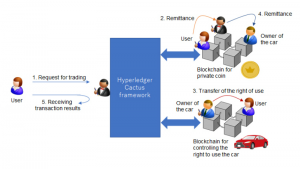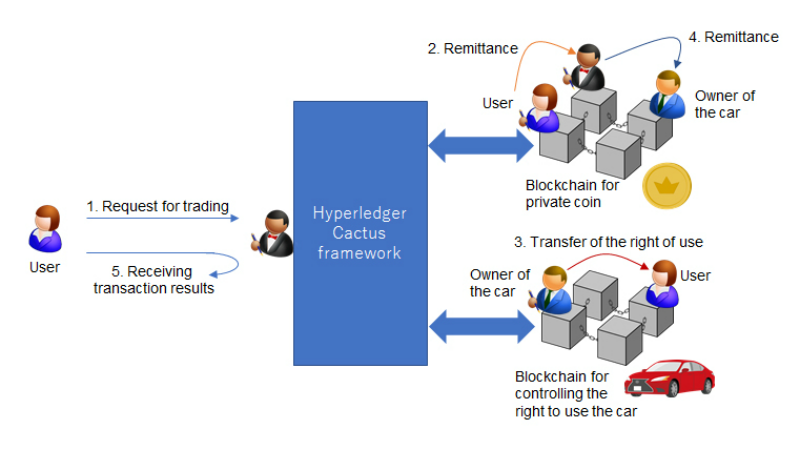
“Hyperledger Cactus has moved quickly through the process of becoming a Hyperledger project thanks to the support and initial code contributions of Accenture and Fujitsu and a compelling use case,” said Brian Behlendorf, executive director of Hyperledger. “There is strong community interest in facilitating the flow of information and transactions across disparate blockchains, and Hyperledger Cactus is tackling that challenge. Now that Hyperledger Cactus is a full Hyperledger project, there will be an even bigger pool of resources and contributors driving this project forward with the aim of delivering market-ready blockchain integration technologies.”

Genesis of Hyperledger Cactus
Blockchains are difficult to modify. On the other hand, they do not require central management. The result is that adoption is increasing in non-financial areas, for example content management and rights management.
In an environment with real asset digitisation, users want to trade these via applications which may interact with multiple blockchains. In such circumstances, a user requires a starting point of trust applicable to the interconnection. This suggests the need for a common platform to protect the transparency and security of such interconnections.
In November 2017, Fujitsu Laboratories developed a proprietary security technology – ConnectionChain – to enable the safe interconnection of blockchains with varying implementation methods and objectives. The software for exchanging different private coins was made available as OSS.
Under the new project Hyperledger Cactus, Fujitsu Laboratories and FLA will integrate the ConnectionChain technology with Accenture’s Blockchain Integration Framework. Jointly they will develop a platform for interconnecting blockchains. This should enhance and deepen digital transformations.
Hyperledger Cactus
The two companies originally submitted a proposal for the development of an open-source software project for integration between multiple blockchains. Accenture, Fujitsu Laboratories and FLA will use Fujitsu’ ConnectionChain proprietary security technology as the basis for the development of infrastructure software so that multiple different blockchains work together. By becoming Hyperledger Cactus. the software becomes open-source.
The Hyperledger Cactus project will develop the foundation for a new architecture. The latter will seek to eliminate differences such as the:
- timing of transactions between multiple blockchains
- enabling of asset transfers
- recovery from transaction errors.
The new open-source technology aims to create a modular, extensible system which will enable integration, communication, operations and transactions between different blockchains. The companies will also offer an SDK as OSS. This will open up the offering of services which can integrate multiple blockchains for software developers.
By working with Accenture, Fujitsu Laboratories and FLA plan to develop an infrastructure software which will:
- integrate different blockchains to securely and reliably work together
- make these available as OSS for the Hyperledger-interested community.
A practical example
By applying the infrastructure of Hyperledger Cactus to car-sharing, for example, it will be possible to create a new service where a car driver can temporarily use a car in exchange for transferring private coins. This would link:
- a car-sharing service blockchain (that manages the rights of car usage)
- a blockchain handling private coins.

The difference is this. Unlike conventional blockchains, which cannot integrate different blockchains or refund excess money back from remitted coins, the Hyperledger Cactus framework will automate the linkages between different blockchains. Moreover, the technology can monitor the results of such operations, thereby facilitating the development of integrated services which combine multiple blockchains.
Enterprise Times: what does this mean
One of the obstacles to enterprise adoption of blockchain was, and is, the difficulty of integrating different blockchain technologies. Most enterprises understand, at some point, they will have to address this. Many are reluctant to commit until there is some clarity about a path forwards.
By leveraging Fujitsu’s ConnectionChain and Accenture’s Blockchain Integration Framework, the Hyperledger Cactus project will establish a foundation for a new architecture. An initial attraction is that this will eliminate differences such as the timing of transactions between multiple blockchains.
However, from a broader perspective – one that arguably extends beyond Hyperledger, the principles embedded in such a foundation will be usable elsewhere. Indeed, this may turn out to be the effect with the most impact of Hyperledger Cactus.


























